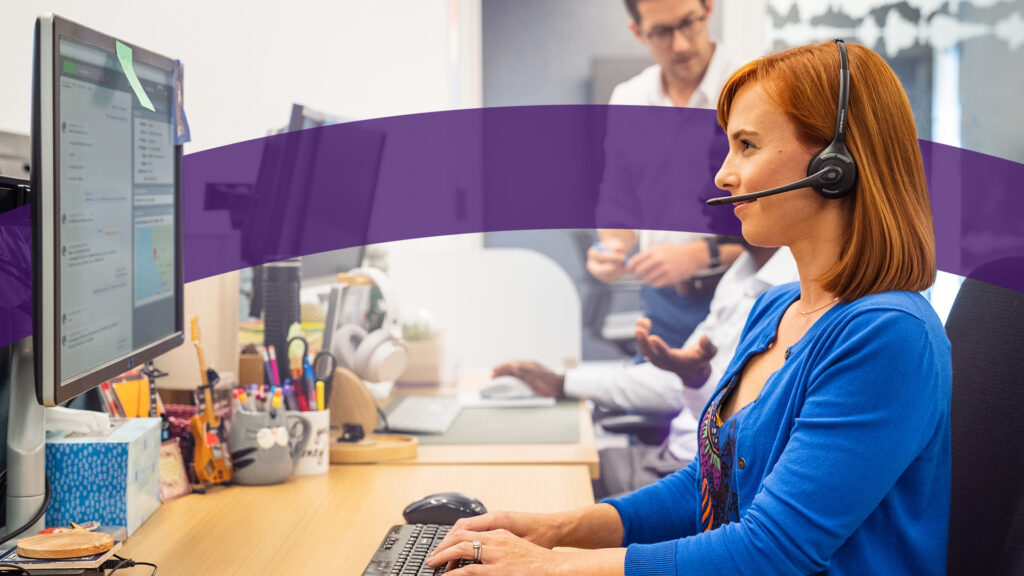What if you could enhance your customer service skills by learning how to effectively communicate with all customers, including those with disabilities?
The concept of inclusivity in customer support isn’t just a nice-to-have; it has become a necessary aspect of excellent service in today’s diverse world.
As live chat grows in popularity as a customer support tool, the need for live chat agents to effectively support customers with disabilities has never been greater.
This article aims to provide you with expert-led training tips, enabling you to handle interactions with customers with disabilities like a pro in live chat.
Why Inclusive Customer Service Matters
What Does Inclusive Customer Service Mean?
Inclusivity in customer service means ensuring that all customers, regardless of their physical or cognitive abilities, have equal access to support.
This principle extends to all facets of customer interaction, including live chat.
When you prioritize inclusivity, you allow every customer to feel valued and understood, regardless of their circumstances.
This not only enhances their experience but also respects their dignity.
How Does Supporting Customers with Disabilities Benefit Businesses?
Embracing inclusivity can provide significant advantages for your business. Prioritizing support for customers with disabilities often leads to increased customer loyalty.
When customers feel acknowledged and heard, they are more likely to return.
Furthermore, a solid reputation for being inclusive can elevate your brand, attracting a broader customer base.
Additionally, legal compliance with accessibility standards is crucial. Supporting all customers helps mitigate the risks associated with non-compliance.
What Are the Challenges of Supporting Customers with Disabilities?
Despite the benefits, you may encounter various challenges when supporting customers with disabilities.
Communication gaps can arise from different needs, including the use of assistive technology.
Often, agents lack awareness about how to effectively engage with individuals who have specific disabilities.
These barriers can lead to misunderstandings, resulting in frustration for both customers and agents alike.
Why Are Live Chat Agents Key to Inclusive Support?
Live chat has become a vital touchpoint for accessible, real-time assistance.
Unlike phone calls, which might be challenging for some individuals, live chat allows customers to engage at their own pace.
You, as a live chat agent, play a crucial role in making this avenue inclusive.
By developing your skills and understanding, you can bridge the accessibility gap, providing support that meets the needs of all customers.
Understanding Disabilities and Their Impact on Communication
What Are the Different Types of Disabilities?
Understanding the various types of disabilities is fundamental to providing inclusive service. Disabilities can be categorized into four main types:
- Physical Disabilities: These may affect mobility and can include conditions such as paralysis, amputation, and muscular dystrophy.
- Sensory Disabilities: These involve impairments in vision and hearing, such as blindness, deafness, and color blindness.
- Cognitive Disabilities: This group encompasses conditions that affect mental processes, including learning disabilities, autism spectrum disorder, and traumatic brain injuries.
- Mental Health Disabilities: Mental health conditions, such as anxiety disorders, depression, and bipolar disorder, can also impact communication and interaction.
How Do Disabilities Affect Communication in Live Chat?
Communication styles can vary significantly based on disabilities.
For instance, individuals with cognitive disabilities might process information more slowly, while those with hearing impairments may use alternative forms of communication, such as sign language or text.
By recognizing these differences, you can create a more supportive chat environment.
Challenges such as slower typing speeds and reliance on assistive technologies can affect the flow of conversation, making it essential for you to practice patience and understanding.
What Are the Best Practices for Communicating with Customers with Disabilities?
Effective communication begins with using clear language and avoiding jargon. Here are some best practices to keep in mind:
- Use straightforward language: This reduces confusion and aids comprehension.
- Be patient: Allow customers ample time to respond. This is particularly important for individuals using assistive technologies.
- Avoid making assumptions: Each individual’s needs and preferences can vary widely. Instead of presuming you know their requirements, ask what they need.
How to Recognize and Respect Individual Needs?
Personalization is key to respecting individual needs. Active listening allows you to gauge a customer’s specific challenges and adjust your support accordingly.
By demonstrating genuine care and attention, you create a welcoming environment that encourages open communication.
Expert Tips for Supporting Customers with Disabilities
How to Adapt Your Communication Style for Different Disabilities?
Different disabilities necessitate tailored communication strategies. For example, here are some adaptive tactics:
- Visual Impairments: Use descriptive language and avoid relying solely on visual references.
- Hearing Impairments: If a customer indicates they have difficulty hearing, focus on written communication. Provide transcripts of any audio-related content and consider using plain language.
- Cognitive Impairments: Break information into smaller chunks, use simpler language, and provide examples to enhance understanding.
- Motor Impairments: Be accommodating and allow extra time for responses. If necessary, you can also offer alternative communication methods, such as voice typing.
What Are the Best Tools for Accessible Live Chat Support?
To provide accessible live chat support, consider utilizing the following tools:
| Tool | Purpose |
|---|---|
| Screen Readers | Assist visually impaired users by reading on-screen text aloud. |
| Keyboard Navigation | Enables users to navigate chat interfaces using keyboard shortcuts. |
| Text-to-Speech Software | Converts written text into spoken words, aiding those with disabilities. |
These tools are essential for creating an inclusive live chat experience.
How to Handle Sensitive Conversations with Empathy?
Certainly, sensitive conversations require a unique touch. You should maintain professionalism while showing empathy.
Listening actively and validating concerns can go a long way in building trust.
Approach conversations with an open mind and a compassionate tone, allowing customers to feel safe sharing their experiences.
What Role Does Patience Play in Supporting Customers with Disabilities?
Patience is crucial in establishing a supportive interaction. Some customers may take longer to articulate their needs, especially if they use assistive technologies.
By giving them the time they require, you demonstrate respect for their process and build rapport that can lead to more productive conversations.
How to Ensure Your Live Chat Platform Is Accessible?
Accessibility features are paramount in creating an inclusive environment. Look for chat platforms that include:
- Alt Text for Images: This allows screen readers to convey information about images to visually impaired users.
- Readable Fonts: Clear, legible fonts help everyone, including those with dyslexia or visual impairments.
- Color Contrast: High contrast between text and background enhances readability for users with visual challenges.
By prioritizing these features, you ensure that your platform can meet diverse needs.
Training Resources for Live Chat Agents
What Are the Best Online Courses for Disability Awareness?
There are numerous online courses designed to enhance your understanding of disability awareness. Consider checking out platforms such as:
- Coursera: Offers courses on inclusivity and disability awareness from recognized institutions.
- Udemy: Features a variety of practical, hands-on courses to deepen your knowledge.
- LinkedIn Learning: Provides professional development courses aimed at enhancing workplace inclusivity.
These resources can give you valuable insights into effective communication strategies.
How to Use Role-Playing Exercises for Training?
Role-playing exercises can improve your skills in a practical setting. You might create scenarios that mimic real-life interactions with customers who have disabilities.
Participating in these exercises allows you to practice various communication styles, brainstorm solutions to challenges, and receive constructive feedback from your peers.
What Are the Best Guides and Resources for Accessibility?
Familiarizing yourself with essential resources can significantly enhance your knowledge of accessibility. Consider reviewing:
- Web Content Accessibility Guidelines (WCAG): These guidelines outline how to make web content more accessible.
- ADA Compliance Guides: They provide vital information about compliance with the Americans with Disabilities Act.
These resources serve as great references, helping you navigate accessibility challenges more effectively.
How to Learn from Real-Life Case Studies?
Real-life case studies can offer valuable lessons and insights into best practices.
Research companies known for their inclusive customer service and examine their strategies.
Understanding their successes and mistakes will equip you with the tools you need to avoid common pitfalls and implement effective measures in your own role.

Overcoming Challenges in Supporting Customers with Disabilities
What Are the Common Challenges Live Chat Agents Face?
Many live chat agents encounter challenges such as miscommunication, technical limitations, and a lack of training in accessibility.
Miscommunication can often arise from using jargon or overly complicated language.
While technical limitations can include chat platforms that are not fully optimized for accessibility, insufficient training leaves agents unprepared to handle diverse customer needs effectively.
How to Handle Situations Where You’re Unsure How to Help?
In situations where you’re uncertain how best to assist a customer with a disability, it’s important to seek guidance.
Don’t hesitate to reach out to supervisors or colleagues who may have more experience in this area.
They can provide insights or escalate as necessary, ensuring that the customer receives the help they require.
How to Avoid Unintentional Bias or Stereotyping?
Every customer has unique needs, and it’s crucial to treat them as individuals. Unintentional bias can seep into interactions if you rely on stereotypes or assumptions.
Instead, focus on the person and their situation. Foster an inclusive mindset and remember that your goal is to assist—not to judge.
How to Stay Calm and Professional in Challenging Situations?
Maintaining composure during difficult interactions is vital. Practice stress management techniques, such as deep breathing or visualization, to help you stay calm.
Remember that your professionalism not only enhances your performance but also shapes the customer’s perception of your organization.
Real-Life Examples of Inclusive Live Chat Support
How Do Top Companies Support Customers with Disabilities?
Many companies excel in providing inclusive live chat support.
For example, major retailers often feature specialized training programs that focus on disability awareness, equipping their staff to handle diverse customer needs effectively.
These companies have incorporated accessibility features into their online platforms, ensuring their live chat services are accessible to everyone.
What Can We Learn from Expert Live Chat Agents?
Industry leaders often share success stories that highlight best practices in inclusive communication.
These agents may emphasize the importance of active listening and tailoring communication styles to individual needs.
Learning from their experiences can enrich your approach and help you develop effective strategies for your unique challenges.
How to Apply These Examples to Your Own Live Chat Role?
Take the time to compare your experiences with successful case studies. Identify areas where you can enhance your approach based on useful insights.
Implementing similar practices into your role—such as fostering open-mindedness and prioritizing respectful communication—can greatly improve your customer interactions.

The Future of Inclusive Live Chat Support
How Will Technology Improve Accessibility in Live Chat?
Advancements in technology are paving the way for even greater accessibility in live chat support.
AI-driven tools can enhance personalization and responsiveness, making it easier for agents to cater to diverse customer needs.
Voice recognition technology may also become more commonplace, facilitating seamless communication for those who struggle with typing.
What Role Will Training Play in Future Customer Support?
As customer demographics evolve, disability awareness training will only grow in importance.
You’ll need to stay updated on the latest developments in inclusivity and accessibility, so you can continue to provide exceptional support.
Embracing ongoing training will equip you with the knowledge to address various challenges as they arise.
How Can Live Chat Agents Stay Ahead in Inclusive Support?
Continuous learning is essential for any professional. Look for opportunities to attend workshops and conferences focused on inclusiveness and accessibility.
Engage with peer networks or online communities to share experiences and learn from others in the field. Staying informed will keep you agile in your role as a live chat agent.
Conclusion
The essence of exceptional customer service lies in its inclusivity. Supporting customers with disabilities builds trust, loyalty, and a positive company reputation.
By adopting the expert-led strategies shared in this article, you can ensure meaningful interactions with every customer you encounter.
Embrace the necessity of inclusivity in your role, and commit to implementing these insights in your daily tasks.
Your customers will appreciate your efforts, and you’ll contribute to a more equitable service landscape.
Ready to provide exceptional support to all customers? Start mastering inclusive live chat techniques today!
FAQs
What are the best tools for accessible live chat support?
Tools like screen readers, keyboard navigation options, and text-to-speech software are essential for accessible live chat support. They accommodate varying needs and enhance the overall experience for all users.
How can I improve my communication with customers with disabilities?
You can improve communication by using clear language, being patient, avoiding assumptions, and actively listening to customers’ specific needs. Tailoring your approach based on the circumstances of each interaction is vital.
What should I do if I’m unsure how to help a customer with a disability?
If you’re unsure how to assist a customer, don’t hesitate to seek guidance from supervisors or colleagues who may have more experience. Collaborative problem-solving can lead to effective resolutions.
How do I ensure my live chat platform is accessible?
To ensure your live chat platform is accessible, look for features like alt text for images, readable fonts, and high color contrast. Choose platforms that prioritize accessibility to create equitable service for all customers.
Where can I find training resources for disability awareness?
Prolific online platforms such as Coursera, Udemy, and LinkedIn Learning offer a range of courses on disability awareness. These resources can help hone your skills and prepare you for delivering inclusive customer support.

